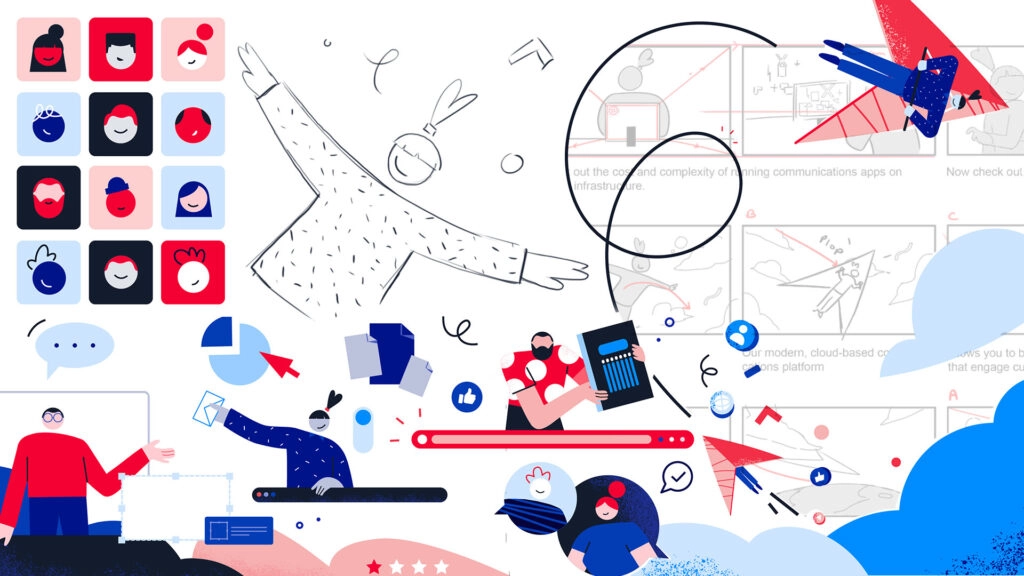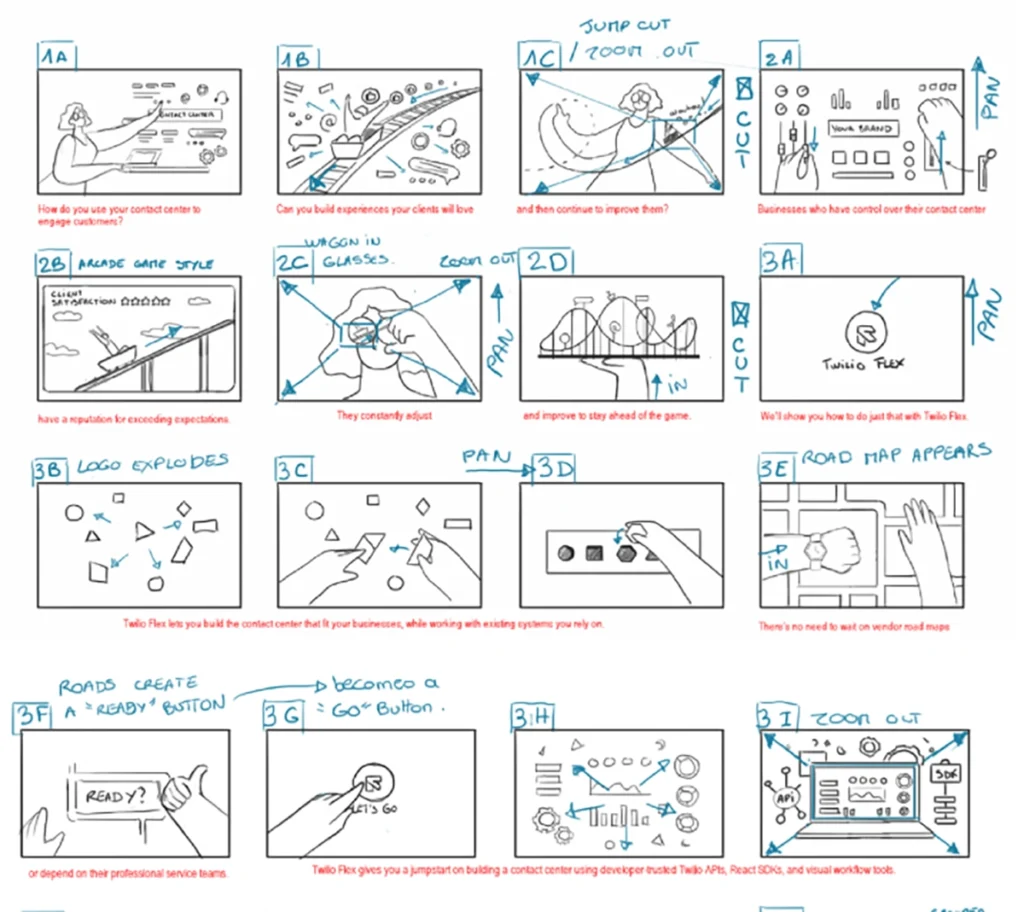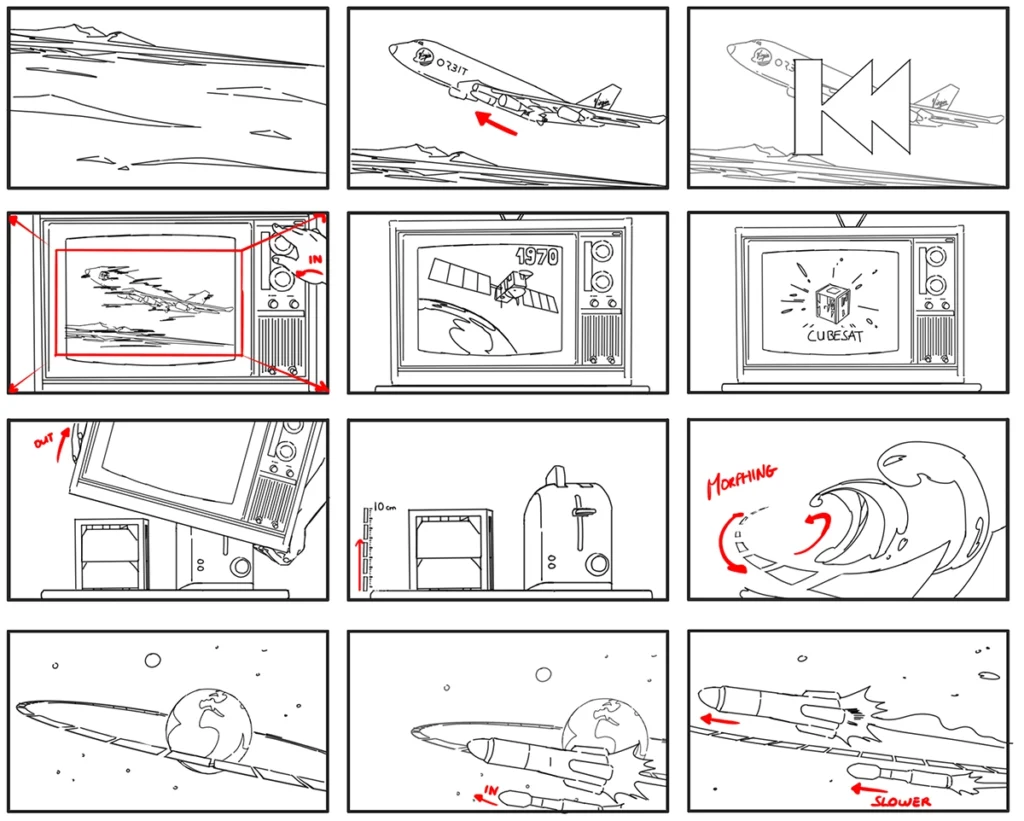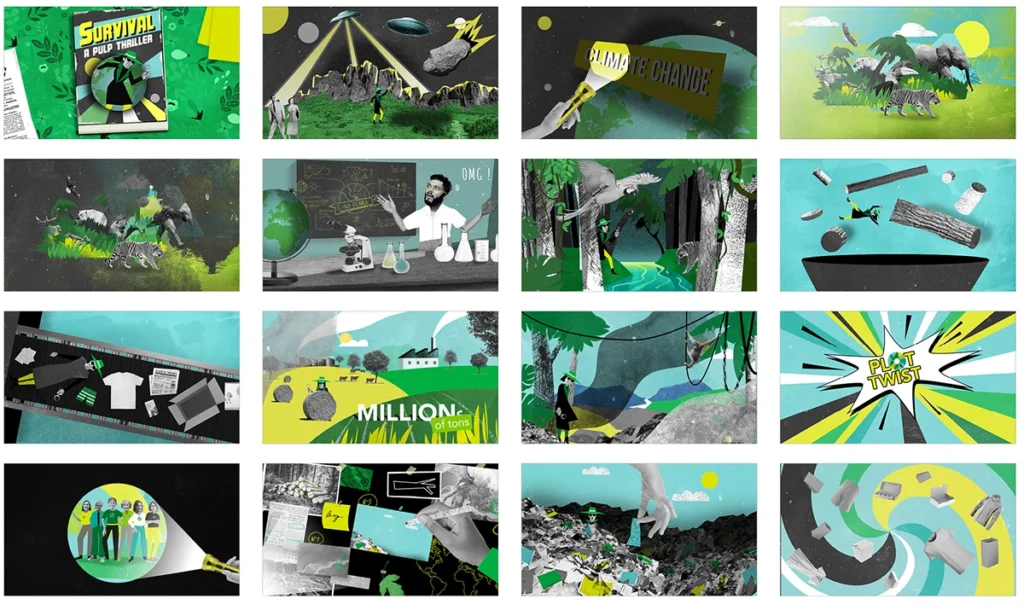Storyboard importance in 2D Animation and Motion Graphics
A storyboard is fundamental for 2D animation videos, explainer videos or motion graphics. It functions as a visual script that guides the entire production process, as well as an organized layout that sequentially presents the animation scenes, characters, and key actions. Throughout the process, a storyboard helps animators visualize the sequence of events, offering a way to visualize the storyline, plan camera angles and movements, and understand how characters interact with their environment. A well-planned storyboard can help save time, reduce revisions, and ensure effective communication of the story.

The Crucial Step Before Storyboarding your animated video: Scriptwriting
1. Start with a clear concept or message:
Every great script originates from a strong central idea or message. Whether it’s a thought-provoking theme, a moral dilemma, or an exploration of human emotions, this foundational idea serves as the compass that guides your storytelling. It sets the tone, direction, and purpose of your script, ensuring that every element you introduce aligns with your core concept.
2. Develop well-rounded and engaging characters:
Characters are the heart and soul of any script. Create characters that feel genuine and multi-dimensional, especially by giving them strengths, weaknesses, aspirations, and conflicts that drive the narrative forward. Audiences connect with characters they can relate to, root for, or even empathize with. Developing intricate backstories and motives can make your characters feel alive, enriching the emotional depth of your script.
3. Keep your dialogue and plot simple and concise:
Clarity is key in scriptwriting. Craft dialogue that sounds authentic and advances the plot or character development. Avoid unnecessary exposition and long-winded speeches. Similarly, maintain a concise plot structure that propels the story without unnecessary detours. Each scene should serve a purpose, either by revealing crucial information, showcasing character growth, or escalating the conflict.
4. Envision each scene while writing it:
Immerse yourself in the world of your script by envisioning each scene as if it were playing out before your eyes. Think about the visual elements, the emotions evoked, and the ambiance. This cinematic approach helps you capture the essence of the scene and translate it into evocative descriptions that will engage readers and later translate well onto the screen.
5. Be open to feedback and revisions:
Writing is a collaborative process and even the most seasoned writers benefit from feedback. Share your script with trusted peers, mentors, or writing groups to gain diverse perspectives. Embrace constructive criticism and be prepared to revise your work. Every round of revisions refines your script – honing its strengths, addressing its weaknesses, and ultimately enhancing its overall impact.
In the realm of scriptwriting, these five tips provide a solid framework for navigating the intricate dance between artistic expression and structured storytelling. As you apply them to your own work, remember that crafting a compelling script is an iterative journey that demands both dedication and a willingness to evolve.

Your Team Members Involved in Storyboarding with our Animation Studio
In the intricate process of storyboarding, a symphony of creative minds converges, each contributing a vital note to the composition.
– Scriptwriter: The scriptwriter’s words lay the foundation for the storyboard. Their vivid descriptions and dialogue provide the script that guides the visual narrative. The essence of characters, emotions, and pivotal moments are translated from text to imagery.
– Storyboard Artist: The storyboard artist is the visual architect who breathes life into the script, and translates the script into a visual format. Through their sketches and illustrations, they map out each scene, framing the shots and angles that capture the essence of the story. They create sketches for each scene to show what happens and in what order, and they also often indicate camera movements. Their artistry serves as the visual blueprint for the animation to come.
– Director: The director’s creative vision guides the entire process. They ensure that the storyboard aligns with the project’s tone and objectives. From shot compositions to character expressions, their oversight ensures that the visual narrative is cohesive and impactful.
– Animators: Animators take the static storyboard and infuse it with movement, expression, and life. They bring characters to life, imbuing them with personality and fluid motion. The synergy between storyboard and animation is where the true magic of storytelling unfolds. While not always directly involved in creating the storyboard, animators review the storyboard to understand the scenes they will be animating. They may provide feedback or ask questions to clarify their tasks.
-Production Team/Producer: The producer or production team oversees the logistical aspects of bringing the storyboard to life. They manage schedules, budgets, and resource allocation, ensuring that the creative vision can be realized within practical constraints.
– Sound Designer or Composer: Sound is a powerful storytelling tool that adds depth and emotion to the visuals. Sound designers or composers work hand in hand with the storyboard to create the audio landscape. Whether it’s the rustling of leaves or a sweeping musical score, their contributions enhance the viewer’s experience.
– Client: If the animation is being made for a client, they would also be involved in reviewing and approving the storyboard to ensure it aligns with their vision and objectives. The client provides an external perspective, ensuring that the final product fits their needs. Client feedback helps refine the storyboard and animation, ensuring that the end result meets their expectations and serves their purpose.

How Long Does it Take to Create a Storyboard for a motion graphics or 2D animation video ?
Storyboard creation can range from a few days to a couple of weeks for a one-minute animation, depending on various factors like the complexity of the animation, number of characters, level of detail, and the storyboard artist’s experience. Remember, storyboarding can be a repetitive process and may require multiple drafts and revisions.
Storyboarding is a critical step in the animation process. A well-crafted storyboard sets the foundation for a successful animation project, acting as a visual guide that brings the script to life and aids all members of the production team. By understanding its importance and mastering its creation, you can improve the effectiveness and efficiency of your animation projects while providing powerful and impressive results.
